Puerto Rico is a culinary paradise, offering a rich tapestry of flavors that reflect its diverse cultural heritage. From the savory to the sweet, the island’s cuisine is a fusion of Spanish, African, and Taíno influences, creating a unique gastronomic experience that tantalizes the taste buds. In this guide, we’ll explore the most popular foods in Puerto Rico, taking you on a delectable journey through traditional dishes, street food delights, and exquisite desserts. Whether you’re a foodie, a travel enthusiast, or a family traveler planning a trip to Puerto Rico, prepare to immerse yourself in a world of vibrant flavors and culinary traditions.
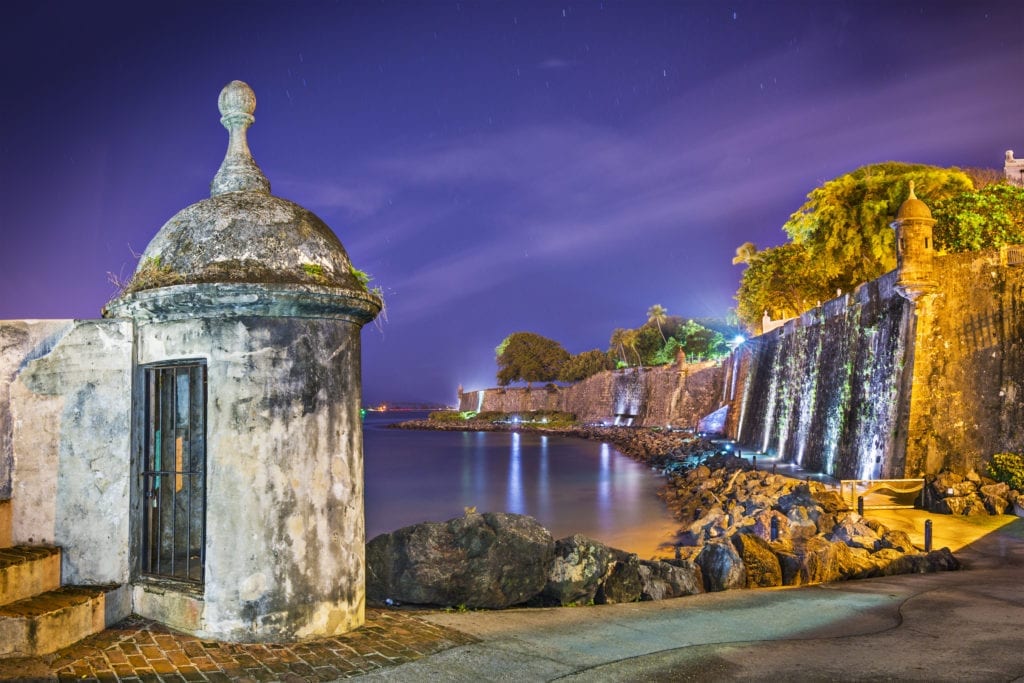
Affiliate Disclosure: There are affiliate links throughout this post. This means if you click on a link and purchase a product through that link, then I will receive a small commission for the referral. And that is kinda cool.
A Brief History of Puerto Rican Food “Cocina Criolla,” a fusion of Taino, Spanish, and African influence.
Puerto Rican food is an infusion of cultures beginning with the indigenous people of the Caribbean, known as the Taíno Indians. The Taíno flourished on corn, tropical fruit, and seafood. They originated Barbacoa, a method of preparing meat similar to what we know as Barbecue. They used a Pilón (mortar and pestle) to mash ingredients such as yuca and plantains for mofongo. Other ingredients from the land of the Taínos include pineapple, papaya, mango, beans, and guava.
Ponce de León arrived with Columbus in 1493, bringing in new ingredients from Spain, including beef, pork, wheat, olives, and olive oil. The arrival of the Spaniards also brought in bacalao, garlic, olives, and cilantro.
The Spaniards soon began planting sugar cane. By producing sugar, Puerto Rico became one of the leading Spanish sugar colonies at the time, thus creating an international identity for themselves.
Sugar production led to increased requirements for slave labor from Africa, thus requiring more ingredients. The African slaves brought plantains, coconuts, okra, and taro (yautia), plus a new method of cooking—frying! It was not the most healthy preparation of food, but y’all know anything is awesome when it is fried, even pickles.
“The history of the world is on your plate, all food is the expression of a long struggle and a long story.”
Anthony Bourdain
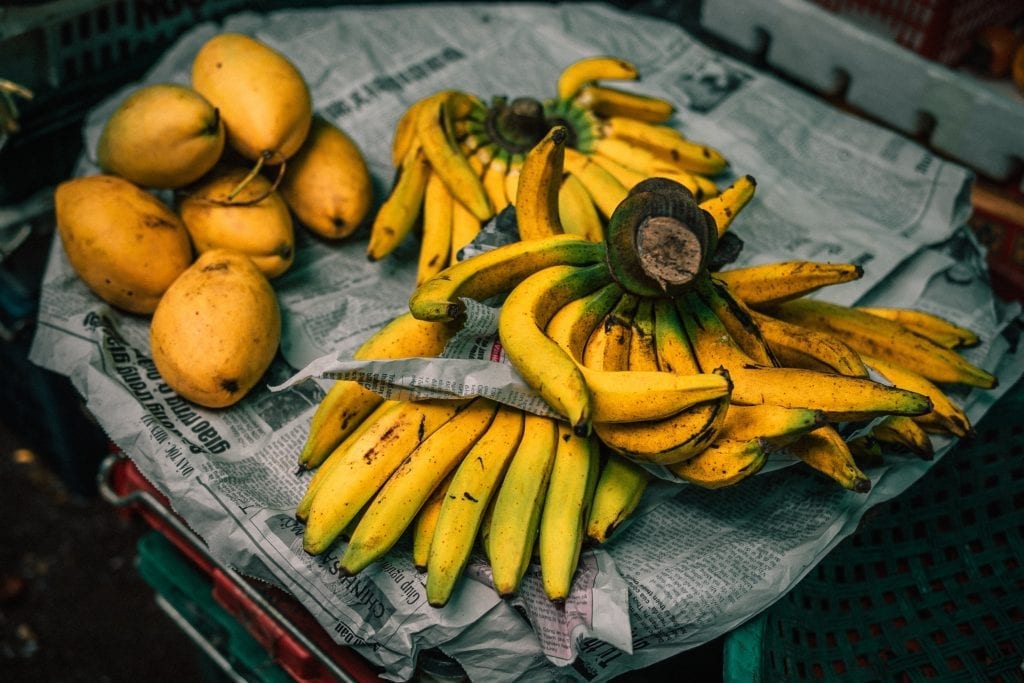
The Most Popular Foods in Puerto Rico
First, I must provide you with a small glossary of terms.
Adobo is a seasoning used for chicken or steak. It is created with garlic powder, ground coriander, turmeric, oregano, black pepper, cumin, annatto, paprika, and sea salt. Adobo can be used as a dry rub or a wet paste.
Sofrito is a blend of peppers, onions, garlic, and cilantro, creating a puree used in stews, beans, and rice. It is also used as a topping for grilled meats. Puerto Rican cooking seems to begin and end with sofrito.
Pilón – A cooking tool similar to a mortar and pestle used to mash and combine ingredients in many Puerto Rican dishes.
Tostonera – A wooden press used to smash green plantains in preparation for frying.
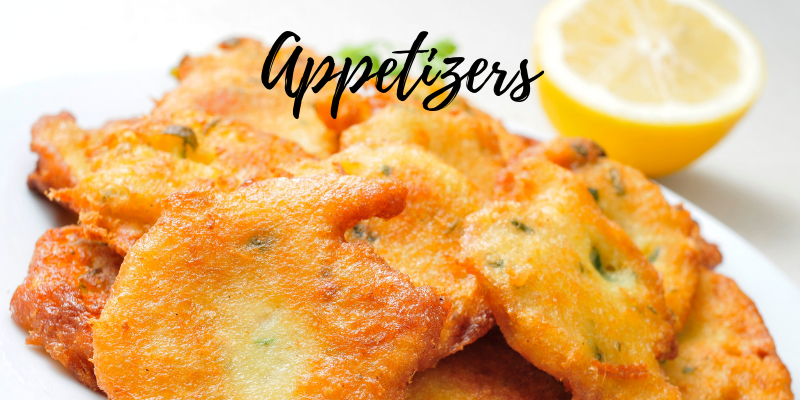
I suggest ordering an appetizer platter so you can sample all the heavenly treats listed below.
Bacalaitos ~ Bacalaitos are crispy codfish fritters immensely popular among locals and tourists. They are made from a batter of flour, spices, and rehydrated salted codfish, and they are deep-fried until golden and crispy. The balance of saltiness from the cod and the savory batter creates an irresistible snack perfect for eating on the go. Bacalaitos can be found at food stalls and festivals across the island, offering a taste of Puerto Rico’s rich seafood heritage.
Empanadillas ~ Are half-moon-shaped pastries filled with ground beef and potatoes seasoned with sofrito. They are often fried, sometimes baked, and flaky on the outside but hearty and tasty on the inside.
Alcapurrias ~ Alcapurrias are savory fritters made from a dough of grated yautía (taro root) and green bananas, filled with seasoned meat, typically beef or crab. Deep-fried to golden perfection, these crunchy delights are a Puerto Rican street food staple. Vendors can be found throughout the island, particularly in areas like Piñones, where street food culture thrives. Alcapurrias offer a satisfying blend of flavors and textures, making them a must-try for anyone exploring Puerto Rico’s street food scene.
Sorullos ~ Corn fritters kinda like hush puppies. Sorullos are crispy on the outside, buttery and sweet on the inside.
Pinchos ~ Pinchos are skewers of marinated meat grilled perfectly, typically chicken or pork. These flavorful skewers are often served with spicy sauce or tostones, making them popular at street fairs and beach gatherings. Pinchos are a testament to Puerto Rico’s love for grilled meats, and their portability makes them a convenient and satisfying street food option.
Papas Rellenas are mashed potatoes stuffed with ground beef seasoned with sofrito and fried to perfection. They are an incredibly flavorful treat that is crispy on the outside and creamy on the inside.
Ham Croquettes (order like this: “Croquettas de Jamon”) — How do I even explain? Ground ham paste is breaded with finely ground saltines and fried to crispy perfection yet soft on the inside. We have eaten Croquettas de Jamon for breakfast, as a snack, as an appetizer, and even mashed on sandwiches (my favorite).
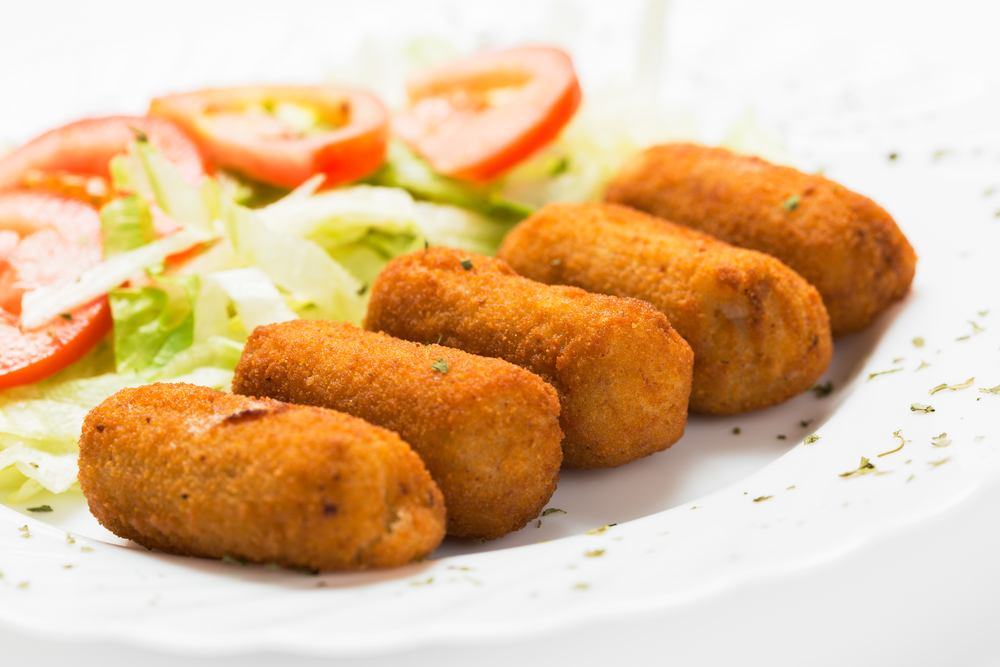
Tostones ~ Tostones are made by slicing green plantains
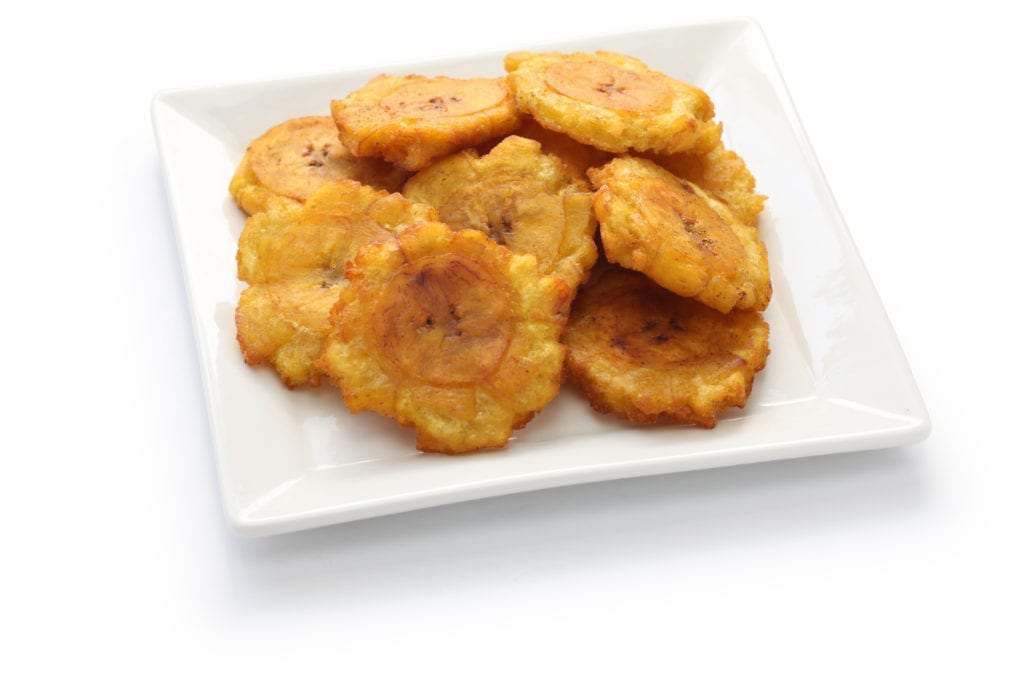
Mayo-ketchup ~ Mayo-ketchup is a quintessential Puerto Rican condiment used as a dipping sauce for all of the above and just about anything you would dip in ketchup (French fries, chicken tenders, burgers). It is a unique mixture of mayonnaise, ketchup, garlic, and other spices. I like to add a little hot sauce to mine for an extra kick.
Asopao de Pollo ~ I have seen this hearty stew as an appetizer, a main dish, and an after-dinner treat. Asopao is somewhere between soup, stew, and paella. It consists of chicken, tomato, ham, rice, bell pepper, peas, onions, and seasonings. It is flavorful and hearty, enough for a meal alone.
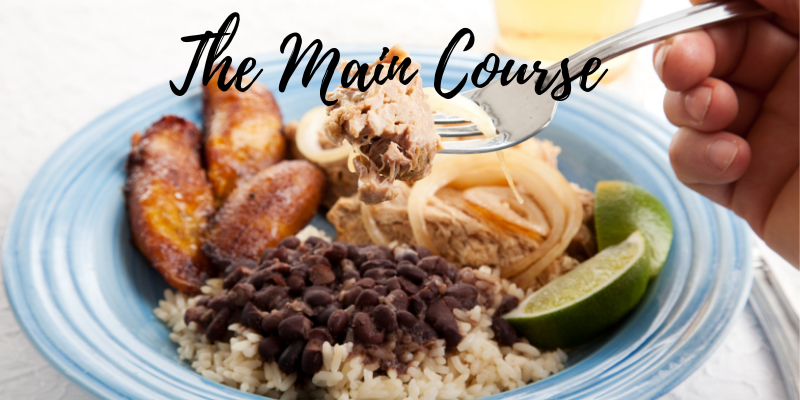
Mofongo ~ Mofongo is a quintessential Puerto Rican dish renowned for its flavorful, hearty appeal. Made from mashed plantains, garlic, and chicharrones (fried pork skin), this dish is often served with various fillings, such as shrimp, chicken, or beef. The preparation involves frying the plantains until golden before mashing them with the other ingredients, resulting in a savory, textured base that pairs perfectly with its accompaniments. Mofongo’s origins can be traced back to African influence, with the dish becoming a staple in Puerto Rican cuisine.
Chuletas Kan Kan ~ The preparation of this pork chop is serious. One word comes to mind when describing Chuletas Kan Kan, and that is Porkalicious. Chuletas Kan Kan is a pork chop with rib meat, fat, and skin all attached, marinated in local goodness, and deep-fried. The finished product is a pork chop surrounded by pork rinds. You may need to bring your cardiologist for this one!
Bistec Encebollado ~ Marinated flank steak rubbed with adobo and cooked in a skillet with onions. It seems so simple, yet so delicious. Maybe it’s the red wine vinegar marinade, or perhaps it’s just the red wine!
Pernil Asado: Usually reserved for special celebrations, this dish is tasty and beautiful. It consists of a pork shoulder marinated overnight and slowly roasted until the meat falls apart. The best part is the crispy, crackling outer skin.
Lechón Asado ~ No exploration of Puerto Rican cuisine would be complete without mentioning Lechón Asado. This succulent roasted pork dish is a classic at family gatherings and celebrations. The preparation involves marinating a whole pig in a mixture of garlic, pepper, oregano, and vinegar, then slow-roasting it over an open fire. The result is tender meat with crispy skin, bursting with flavor. Lechón Asado’s roots date back to Spanish colonization, but it symbolizes Puerto Rican culture and hospitality.
Pescado Frito ~ For seafood lovers, Pescado Frito is a must-try dish in Puerto Rico. This simple yet delicious fried fish is typically served with rice, beans, or tostones (fried plantains). The fish is seasoned, lightly coated in flour, and perfectly fried, creating a crispy exterior while maintaining a moist interior. Coastal regions of Puerto Rico, such as Piñones and Luquillo, are renowned for their fresh seafood offerings, where you can enjoy Pescado Frito with a stunning ocean view.
Tostones de Camarones ~ Tostones de Camarones combines the best of both worlds—crispy tostones and succulent shrimp. This dish features shrimp sautéed in a garlicky, buttery sauce, served atop twice-fried plantain slices. The contrast between the crunchy plantains and the tender shrimp creates a delightful texture while the flavors meld together harmoniously. Tostones de Camarones is a popular appetizer at beachside eateries and local restaurants, offering a taste of Puerto Rico’s coastal bounty.
**Restaurants serve these meals with pink or red beans, white rice, and green or ripe plantains. **
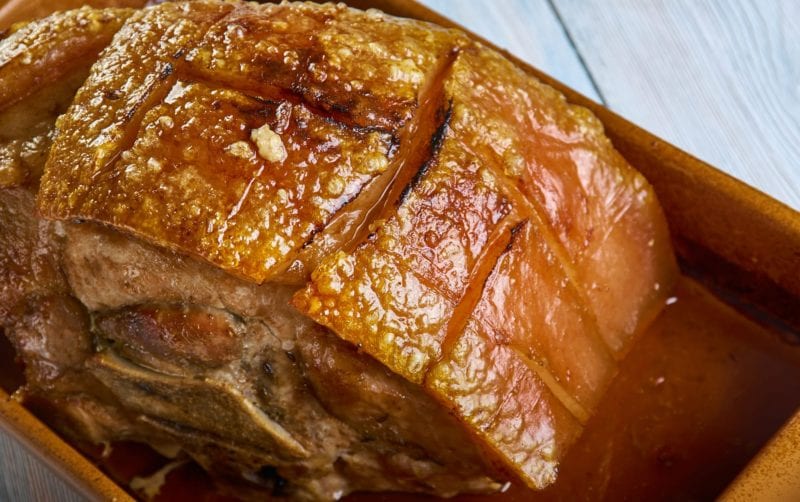
Arroz Con Gandules ~ Another iconic dish, Arroz con Gandules, is a flavorful rice dish cooked with pigeon peas, sofrito, and pork. Considered the island’s national dish, it’s often prepared during festive occasions such as Christmas. The secret to its distinct flavor lies in the sofrito—a blend of herbs and spices sautéed in olive oil, which forms the aromatic base of the dish. Pigeon peas add a unique texture and earthiness, making Arroz con Gandules a beloved comfort food in Puerto Rico.
Pasteles ~ Pasteles are made in batches for special occasions, particularly Christmas. Pasteles are similar to a tamale. They are made by encasing adobo-seasoned pork in green banana dough and then wrapped in a banana leaf. The pasteles are then boiled. Families gather and create huge batches of
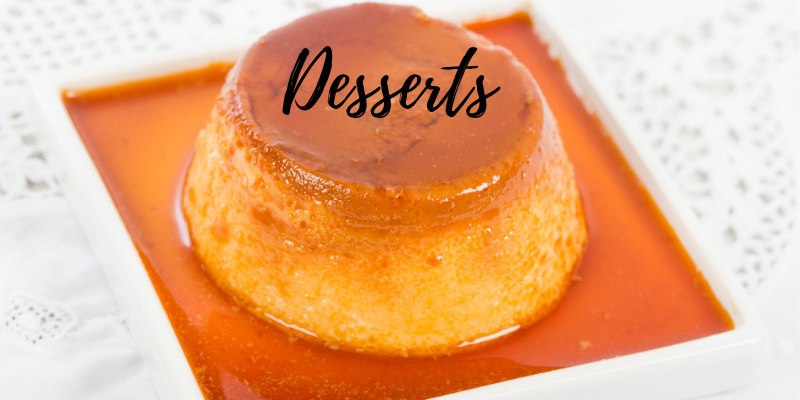
Flan ~ Regarding desserts, Flan is a classic choice in Puerto Rico. This creamy caramel custard dessert is beloved for its smooth texture and rich flavor. Made with eggs, condensed milk, and vanilla, Flan is baked in a caramel-lined mold, allowing the sugar to caramelize and create a glossy topping. The result is a luxurious dessert that’s as visually appealing as delicious. Flan’s origins can be traced back to Spain, but it has become a staple in Puerto Rican households. There are endless variations of this treasure, such as flan de coconut, mango, chocolate, or espresso. This dessert is not super sweet, but the bath of caramelized sugar puts it right over the top.
Tembleque ~ Tembleque is a simple and satisfying coconut pudding. Made with coconut milk, cornstarch, and sugar, it is cooked until thickened and then chilled to set. The name “tembleque” refers to its jiggly, trembling texture, making it a fun treat for kids and adults. Often topped with cinnamon, Tembleque is a refreshing dessert perfect for combating Puerto Rico’s tropical heat.
Dulce de Leche is a sweet, caramel-like confection made by simmering milk and sugar until it thickens and turns golden brown. In Puerto Rico, it’s used as a topping for various desserts or enjoyed on its own. The rich, creamy flavor of Dulce de Leche adds a touch of indulgence to any treat, making it a favorite among those with a sweet tooth.
Arroz con Dulce is a sweet rice pudding cooked with milk, sugar, vanilla, and a cinnamon stick. It is simple yet lovely and tasty. Arroz con dulce is sometimes made with coconut milk, with raisins and spices such as ginger, cloves, or anise added.

Piragua, also known as a Puerto Rican snow cone, is a frozen, sweet treat served all over Puerto Rico. However, you probably will not find it on the menu. Piragua is shaved ice covered in a sweet tropical syrup of choice. With the temperatures in Puerto Rico soaring in the summers, this is truly a refreshing and sweet treat you will all enjoy.
Bread Pudding: Order like this: “Budin de Pan”—bread soaked with milk, sugar, and spices, cooked and caramelized to perfection.
Mallorca Bread ~ Pan de Mallorca (Puerto Rican sweet bread rolls) are plump bread rolls known for their buttery and fluffy texture. Made with flour, yeast, milk, water, egg yolks, and butter, these rolls are thought to have been inspired by Ensaïmades, a sweet pastry from the Spanish island of Mallorca. For a classic experience, top with powdered sugar and dip into a hot cup of strong and bold Puerto Rican coffee.
Sweet plantains and Vanilla Ice Cream ~ Sounds so simple, but it is perfectly light, sweet and delish.
Limber: You won’t find this on too many menus in Puerto Rico. A limber is like Italian Ice with a tropical twist, a tasty treat found throughout the island at roadside fruit stands and sometimes at convenience stores. Create them by combining a favorite tropical juice, water, and sweetener (sugar, agave, honey). Freeze them in a plastic cup. To eat them, you squeeze the cup from the bottom; the limber pops out for you to enjoy.

Guava paste with salty cheese ~ Simply a slice of salty cheese with a slice of guava paste. You have to see it and taste it to believe it. The saltiness of the cheese plus the sweetness of the guava is a combination you don’t want to miss.
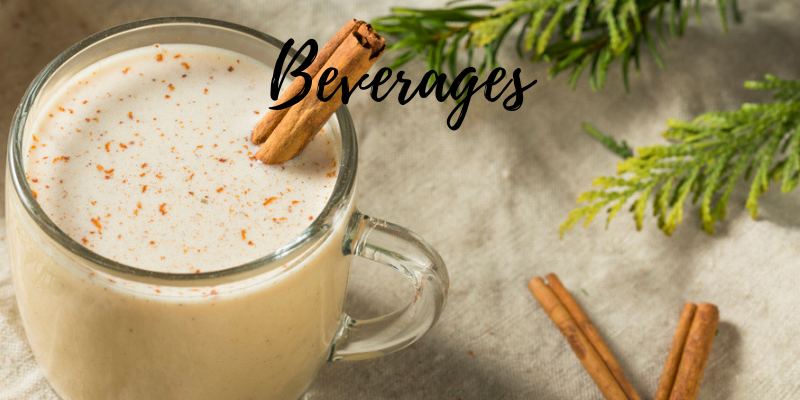
Coquito ~ Coquito is a Puerto Rican holiday beverage similar to eggnog. It is made with coconut milk, sweetened condensed milk, spices, and rum. Traditionally enjoyed during festive gatherings, Coquito is a creamy, rich drink that embodies the spirit of Puerto Rican Christmas celebrations. Combining coconut and warming spices creates a comforting beverage perfect for sipping with friends and family.
Medalla ~ A light, tasty, yet simple beer brewed in Puerto Rico. Medalla Light, with an ABV of only 4.2% and 126 calories, is a local favorite and a must-try for tourists. This light, crisp, and refreshing beer is perfect for the island’s balmy climate.
Pitorro ~ I brought back a case of Pitorro to my friends here in Florida, and it was a hit. Pitorro is referred to as “moonshine rum” in Puerto Rico. With this in mind, be careful with a sweet, tasty sip, and I mean sip. The creation of Pitorro is an art often passed down through generations. Tropical fruit is added to clear, sugar cane or molasses-based liquid. The concoction is buried in a dark space for months to cure properly. Alcohol levels vary at the discretion of the creator. Pitorro can be purchased commercially, but finding someone who knows someone who knows someone will get you the best blend!
Rum ~ Mexico has Tequila. Kentucky has Bourbon. Puerto Rico has Rum. Rum production has been essential to the Puerto Rican economy for centuries. Bacardi has a massive distillery across San Juan Bay that has multiple tours and tastings. But Don Q is probably the favorite of most Puerto Ricans. There are several types of Rum: light, gold, dark, and spiced.
** Fun Fact – Rum is one of Puerto Rico’s main exports, with over 70% of the Rum sold in the United States coming from the island.**
Coco Frio ~ Not necessarily an adult beverage unless, of course, you add Rum. Coco Frio is cold coconut water sipped directly from the coconut. The coconuts are kept in a cooler until purchased. The top of the coconut is chopped off gracefully by a machete and handed to you to enjoy. If you finish your coconut water at the stand, ask to have the coconut open so you can eat the meat. To me, the meat of the coconut is the best part. Coconuts are delicious, refreshing, and healthy.
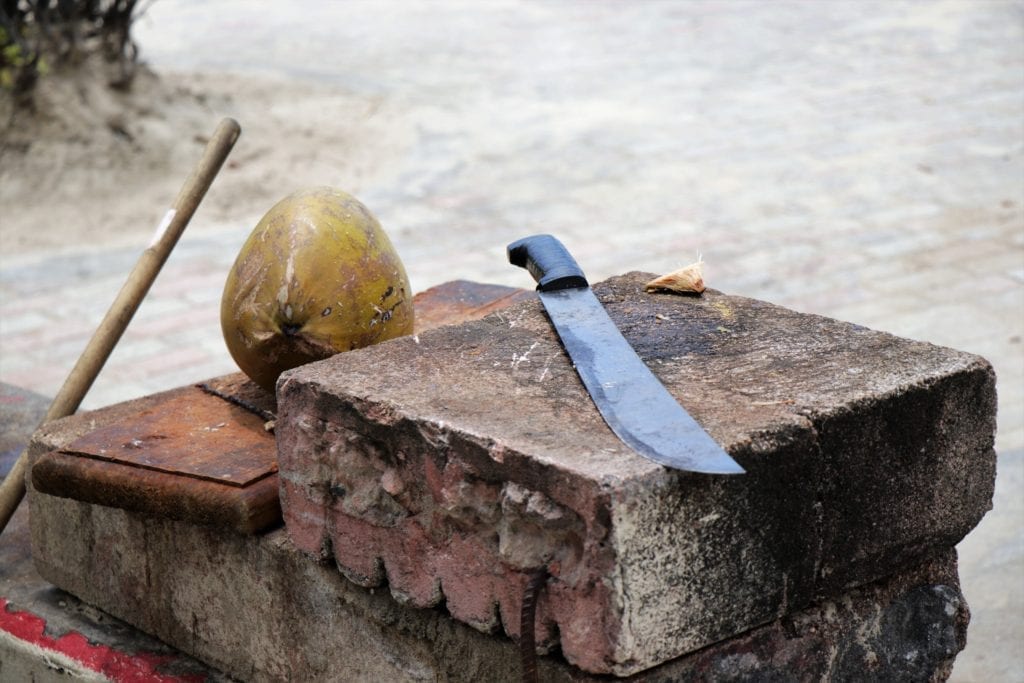
One final note. The coffee.
Café Colao ~ Puerto Rico’s coffee culture is alive and well, with Café Colao standing out as a beloved beverage. This strong, aromatic coffee is brewed using a colador, a traditional cloth filter, resulting in a full-bodied and flavorful cup. The interior of Puerto Rico, with its volcanic soil and climate, is perfect for growing some of the best coffee beans in the world. Coffee plantations in regions like Adjuntas and Yauco produce high-quality beans, contributing to the island’s reputation for exceptional coffee. Whether black or with a splash of milk, Café Colao is a must-try for any coffee enthusiast visiting Puerto Rico.
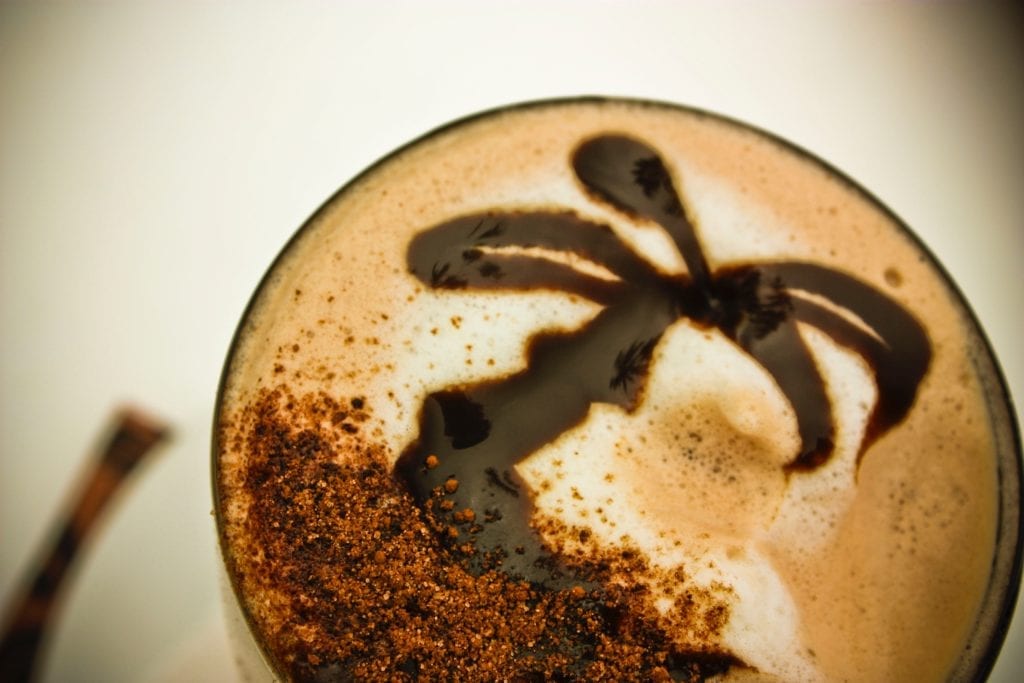
Best Places to Enjoy the Most Popular Foods in Puerto Rico
Local Restaurants
For an authentic taste of Puerto Rico, visit local restaurants like La Casa de Los Pastelillos in Salinas or Restaurante Raíces in San Juan. These establishments offer traditional dishes prepared with care, providing an immersive culinary experience that captures the essence of Puerto Rican cuisine.
Food Festivals
Puerto Rico hosts various food festivals, such as the Saborea Puerto Rico Culinary Festival and the Coffee & Chocolate Expo. These events celebrate local flavors and offer a chance to sample various dishes from renowned chefs and vendors, making them a must-visit for food enthusiasts.
Local Markets
Exploring local markets, such as Mercado Santurce in San Juan, allows for discovering fresh produce, artisanal products, and street food delights. These bustling hubs of activity offer a glimpse into daily life in Puerto Rico, allowing visitors to connect with local culture through food.
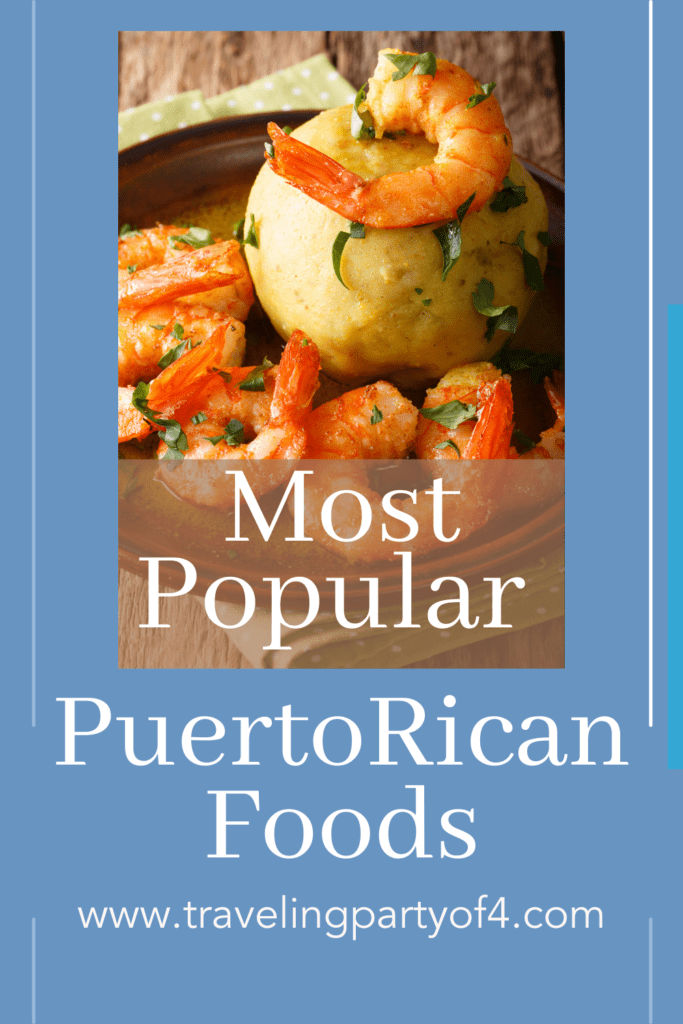
Puerto Rican cuisine is a vibrant celebration of flavors, traditions, and cultural influences that have created a unique culinary landscape. From iconic dishes like Mofongo and Lechón Asado to delectable desserts and street food gems, the island offers diverse foods that cater to every palate. In my opinion, Puerto Rican cuisine is genuinely the best attraction on the island.
Whether you’re a seasoned traveler or a curious foodie, exploring Puerto Rican cuisine invites you to savor the island’s rich history and culture. We encourage you to share your favorite Puerto Rican dishes and experiences and to continue discovering the flavors that define this captivating destination. You may return home a few extra pounds heavier but will return satisfied.
Here is a checklist so you can make sure to check off what you tried. (Y’all know I had to make a checklist).



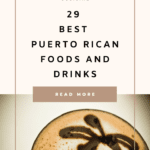
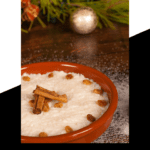
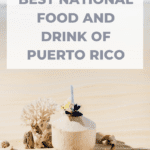
I’ve never been to Puerto Rico but I am very familiar with their national dishes like adobo, we have those in the Philippines too. All these foods look so delicious, I am already hungry
It is the best, we love the food and are excited to go back this summer.
I would love to have some Ham Croquets. They sound really delicious. I have tried Alcapurrias once but I don’t think it was an authentic one. Thanks for this list.
The croquettas are a favorite of mine. We smash them on ham and cheese sandwiches, it is so good.
I think you covered everything! This is a great refresher Justin time for my visit next month.
Oh, lucky you. Have fun.
It’s a first time I see any food from Puerto Rico, I have never been there. I don’t really like fried food, so would skip appetizers, but all the rest looks really delicious.
There are lots of fried treats, for sure. But you can find delicious food in Puerto Rico that is not fried.
I don’t believe I’ve tried Puerto Rican food but some of the dishes you mention do sound slightly familiar and maybe because the food is derived from a mix of several cultures. For exmaple, Adobo seasoning is quite common in Asian countries, especially The Philippines so I know it from there. Also, croquettes (which are very commonly found as well) though you talk about ham, I’ve only had the ones made of potato. Empanadillas also sound very much like the empanadas I’ve had here, and I believe its the same thing! I’m such a foodie, I would love to try everything you’ve recommended!
I would love to try authentic Asian food, we only have the American interpretation here. I am so sure that it is quite different than the real thing.
And now I’m hungry…. I didn’t know that Puerto Rico had such distinctive food choices, although I’ve always wanted to go. Everywhere I travel ends up basically as a food tour (or, rather, “stuff things down the hatch” tour), so the sorullos sound delicious, and I’ve never met a sweet treat I didn’t like – so I’d love the piragua for sure! And, I’d never pass up a croquette for any reason. Thank you for this informative post!
I am serious. I come back with at least 5 pounds extra every trip, but it is so worth it.
This looks so good and that made me so hungry!! Love it!
It is what I look forward to most!
I’m not a super adventurous eater, but some of these dishes look so amazing!!!
My kids aren’t either. But, they try most things and actually love most things in Puerto Rico. If they don’t like what is being served, there’s always beans and rice.
Wow these look and sound amazing – especially the Tostones. Think I definitely need to try and be more venturesome!
They are a family favorite and I just can’t find anything close where I live. It is not the same!
I love the cuisine in PR!! Hope to make it there one day!!
It is one of our favorite family destinations. Love it.
I first got to try mofongo at a Puerto Rican restaurant in Seattle, but I had heard about it before that from my cousin who went to San Juan. I have to say, it definitely lived up to the hype and opened my eyes to the world of Puerto Rican cuisine, which you do a great job of introducing in depth in this post! All the photos look amazing; coquito especially sounds like it would be so delicious!
Coquito is the best, we usually have to add some extra rum, though:) Thank you for your kind words, by the way.
I am pleasantly surprised that I knew about many of the dishes you presented here. Thanks for sharing your culinary adventures with us.
You are so welcome!
My family is from Costa Rica and even though one is an island and the other is in Central America, a lot of the food I am VERY accustomed to eating. Everything is delicious, especially my #1 food: fried plantains!
That may be my number 1, too. Although, so much to choose from.
Mofongo! The best, biggest meal I have ever had. So many great foods to eat in Puerto Rico and based on this post I guess I have only scratched the surface.
Looks so yummy! I haven’t tried Puerto Rican food before but it reminds me a little of Cuban food which is delicious! Is food pretty reasonable in Puerto Rico?
There are many things that are similar to Cuban food. They eat Cuban sandwiches (with mashed croquettes)! And drink Cuba Libre. And you can definitely find reasonably priced food on the island. Of course, there are some fine dining restaurants that can be pricy, but mostly everything is reasonable.
This is great, I’d return home a few pounds heavier for some of that food. I love Puerto Rican cuisine, but I’ve never had it in Puerto Rico. Sign me up!
Definitely, you must try it. I try not to concern myself too much with the extra pounds. It is worth it.
You have just made me hungry while reading your post. I’m a foodie person that whenever I get the chance to visit a certain place, I make sure to try their local food cause I get to experience the unique culture of the place by tasting their food. I haven’t been to Puerto Rico before, and I will surely try these foods as much as I can If I get the chance to traipse my feet. The food list you’ve shared here are not just interesting, but they all look tempting and luscious. Thank you so much for sharing this with us.
Thank you. Luscious is the perfect word! I am with you in trying the foods of a certain destination. It is so much of a part of our culture, and it may be my favorite part of traveling.
This looks amazing, it’s going on my list! Especially want to try Coquito <3
Yes, my favorite, too. Christmas isn’t Christmas without Coquito!
Puerto rican cuisine looks absolutely amazing. I might try and make some of these dishes for dinner one night. Thanks for sharing.
Marco, You will love it. It is amazing and I cannot wait to get back.
Oh my goodness. This write-up is too delicious to read this time of the day. It’s my early morning here and I haven’t eaten breakfast. I’m now salivating, fantasizing about flying to Puerto Rico!
I totally get it. Wait til you see what they eat for breakfast! And the coffee is the best.
Mayo ketchup is called “aurora sauce” in Japan and it’s considered a condiment for kids haha. One of my all time favorite condiments!
Mine, too! Better than plain old ketchup anyday!
It does not only look that the food is amazing, but also Puerto Rico seems a pretty cool destination with plenty to see.
From what I have seen, the food is really similar to Spanish cuisine, which is really good 😀
It is very similar to Spanish and Cuban, but with a couple of extras. It is great. And Puerto Rico is the best.
Very knowledgeable article and we loved visiting all of this in our visit to Puerto Rico.. happening city it is.
Puerto Rico is so much fun, we love it. And happening? It sure is.
I don’t believe I have tried any of these dishes before, but now I really want to! Yum!
Oh, you must. The food in Puerto Rico is the best. My favorite part of traveling to the beautiful island.
I love how detailed this is. I love learning about different cultures especially the food and this was definitely a great read! 👍
Thank you. I love this part of our visit, always.
Definitely adding Puerto Rico to my bucket list! I’d love to try everything you mentioned lol! Sounds so good!
It is the best. I love the food of Puerto Rico, it is my favorite thing to do when we visit.
I love this! My father is Puerto Rican and I was just talking about wanting to try some new dishes. Ironic, right?! Thank you for this post! Now I can start trying some out!
Yes, try them out. You will love it.
The book cocina criolla by Carmen Valdejuli has best recipes from Puerto Rico and available still to this day. I might need a new one soon mine is falling apart.
Agree. It is one of my favorites, actually, the first one I bought to learn how to cook Puerto Rican Food.
Great article, I’m Puerto Rican and always enjoy articles about our food and culture especially when the information is correct. You did great with our most popular foods. Thanks for loving our food and our island.
You are welcome. You make it easy!
One brilliant post!Though Iam not quite familiar with most of the terms…given a chance,I would like to try out Mofongo.
Mofongo is my favorite. I eat it sometimes for lunch and dinner when we are in Puerto Rico.
Puerto Rican food is the best! If you ever visit Puerto Rico, please don’t leave without trying at least Mofongo. Any dish above is also very good but that one is my ultimate favorite. I always tell everyone to try Mofongo at least once in their life. I love mine with shrimp. =)